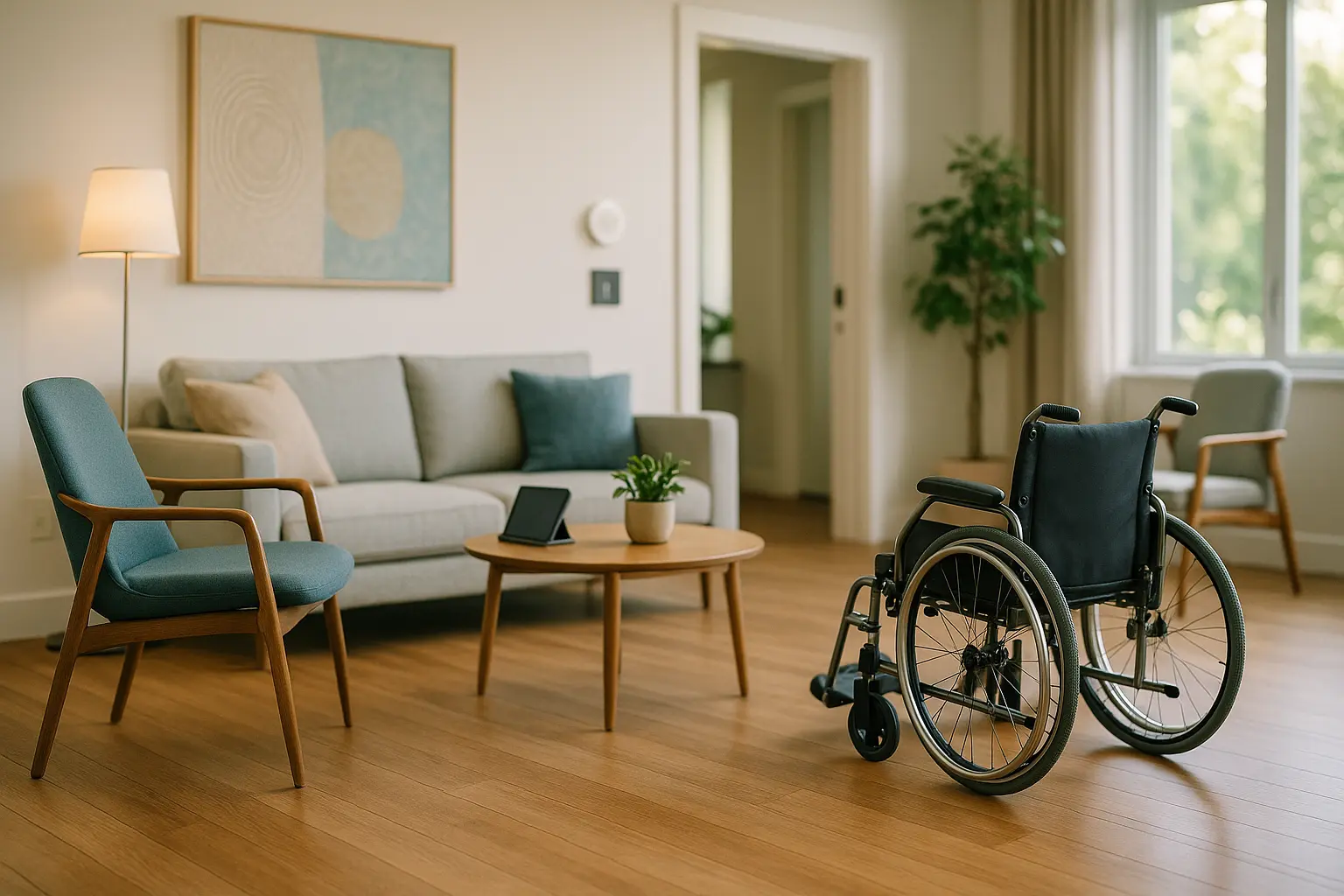In an ever-evolving world where the focus is shifting towards inclusivity and diversity, it’s high time we spotlight the universal design principles that make our spaces more welcoming and accessible to everyone. Imagine a world where every home, office, or public space is designed with individuals of all abilities in mind, transforming the mundane into extraordinary. This vision isn’t just a distant dream; it’s an achievable reality that beckons us to challenge conventions and embrace possibilities. Let’s delve into the wide principles of universal design and uncover how they can revolutionize our spaces, making them equitable, usable, and delightful for all.
Understanding Universal Design: More Than Just Accessibility
When we talk about universal design, we’re diving into a concept that transcends mere accessibility. It’s about weaving a tapestry of design that embraces all users—young, old, with or without disabilities—without the need for adaptation. Unlike traditional design, which often requires retrofitting or modifications, Universal Design Principles integrate inclusivity from the outset.
Universal design is not just a principle; it’s a holistic approach. It asks us to consider varied attributes, from wide entrances that accommodate wheelchairs to controls that can be operated by individuals with limited dexterity. It’s about creating environments that anticipate and embrace diversity.
By adopting universal design tactics, we find ourselves not limiting creativity but enhancing it. We move beyond the notion of mere access to creating spaces that resonate with all people. Every space, be it our homes or public areas, becomes a canvas where inclusive design principles transform the ordinary into the extraordinary.
Designing Spaces That Speak to Everyone
Let’s venture into the realm of design, where creativity meets inclusivity. Designing spaces with a universal mindset invites us to blend aesthetics with functionality, crafting a symphony where every individual feels at home. This isn’t just about grand gestures; it’s about the subtle nuances that make a space truly inclusive.
Consider the humble door handle: a simple yet powerful element. By choosing lever-style handles, we cater not just to people with disabilities, but to everyone—from a toddler to an elder with arthritis. Similarly, products with tactile cues or intuitive interfaces can transform experiences for all users.
Incorporating universal design doesn’t mean sacrificing style. On the contrary, it’s about striking a balance where spaces are both accessible and visually appealing. By creatively integrating design principles, we can construct environments that reflect our evolving understanding of inclusivity—spaces that are not only functional but also resonate with every individual who encounters them.
Real-world Examples: Universal Design in Action
Theory is compelling, but seeing universal design in action is truly enlightening. Across the globe, architects and designers are embracing these principles to create transformative spaces that cater to the diverse needs of their users.
Take, for instance, the homes in the Netherlands, where design principles emphasize adaptability. These homes come equipped with features like adjustable countertops, ensuring functionality for individuals of varying heights and abilities. Such thoughtful design elements demonstrate how universal principles can be seamlessly integrated into everyday living.
In Japan, public transport systems offer another stellar example. With platforms designed at the same level as the trains and wide entry points, the system fosters accessibility for everyone, including those with mobility challenges. Such spaces not only prioritize ease of movement but also cultivate a sense of dignity and autonomy.
These examples inspire us to envision the possibilities when universal design becomes a norm rather than an exception. They encourage a mindset shift, where inclusive design becomes the backbone of every space we create.
Implementing Universal Design in Our Everyday Spaces
As we ponder the future of design, the onus is on us to implement universal design in our everyday spaces. This journey towards inclusivity begins with a commitment to understanding the diverse needs of users and actively seeking solutions that cater to all.
Incorporating universal design at home might start with small changes—a wide doorway here, a tactile switch there, each detail contributing to a larger mosaic of accessibility. By engaging with these principles, we open the doors to innovation and creativity, constructing spaces that are not only functional but also invite everyone to participate fully.
The principle of inclusivity extends beyond design; it becomes a lens through which we view our environment. In our communities, public spaces can mirror the universal design principles seen in forward-thinking cities. By advocating for these changes, we can foster spaces that not only meet today’s needs but anticipate those of tomorrow.
Ultimately, universal design is about more than just space; it’s about embracing the idea that our environments can and should reflect the rich tapestry of humanity. By embedding universal principles in our everyday designs, we take a crucial step towards a more inclusive, dynamic society.
As we navigate the journey of universal design, the path forward is clear: by embedding principles of inclusivity into our spaces, we redefine what it means to create environments that serve all people. The benefits are multi-fold, from enhanced accessibility and user satisfaction to fostering a sense of belonging for all individuals.
The future awaits those who dare to envision spaces that speak to every heart, every soul, and every ability. By championing and implementing universal design, we honor the diversity of the human experience, crafting spaces where everyone feels seen, heard, and welcomed.
Let us rise to the challenge and embrace the potential of universal design, not just as a set of guidelines, but as a call to action—a transformative movement towards a more inclusive, compassionate world. Together, we can build spaces that celebrate our shared humanity, ensuring that no one is left on the sidelines.
FAQ
What is Universal Design and why is it important for living spaces?
Universal Design refers to the development of environments that are accessible and usable by everyone, regardless of age, ability, or status. It’s crucial for living spaces because it ensures inclusivity, enabling all individuals to live, work, and interact comfortably together.
How does Universal Design differ from accessible design?
While both aim to cater to diverse needs, Universal Design is a broader concept. It focuses on creating spaces that are inherently usable by all people, without needing modifications. Accessible design, on the other hand, often involves adapting environments to meet the needs of individuals with disabilities.
What are some key principles of Universal Design that can be applied to homes?
Key principles include: 1. Equitable Use: Designs that are useful and marketable to people with diverse abilities. 2. Flexibility in Use: Accommodating a wide range of preferences and abilities. 3. Simple and Intuitive: Ensuring the design is easy to understand, irrespective of the user’s experience or knowledge. 4. Perceptible Information: Communicating necessary information effectively to the user, regardless of ambient conditions. 5. Tolerance for Error: Minimizing hazards and the adverse consequences of accidental actions.
What are some examples of Universal Design features in a living room?
Examples include open floor plans for easy movement, lever handles on doors instead of knobs, adjustable lighting to accommodate various visual needs, and furniture that is both functional and stylish for people of all abilities.
How can Universal Design benefit individuals without disabilities?
Universal Design creates spaces that are more comfortable and convenient for everyone. For instance, features like no-step entries, which are essential for wheelchair users, also benefit parents with strollers or people carrying heavy loads. It fosters an environment that is more adaptable to changing needs, benefiting all users.



